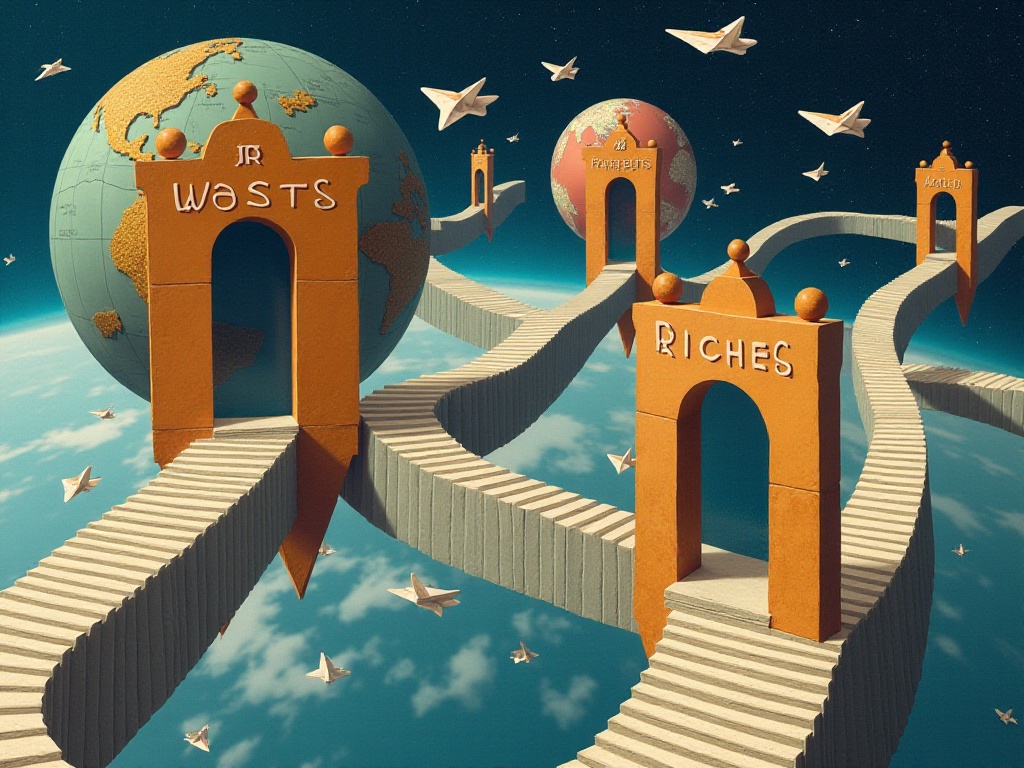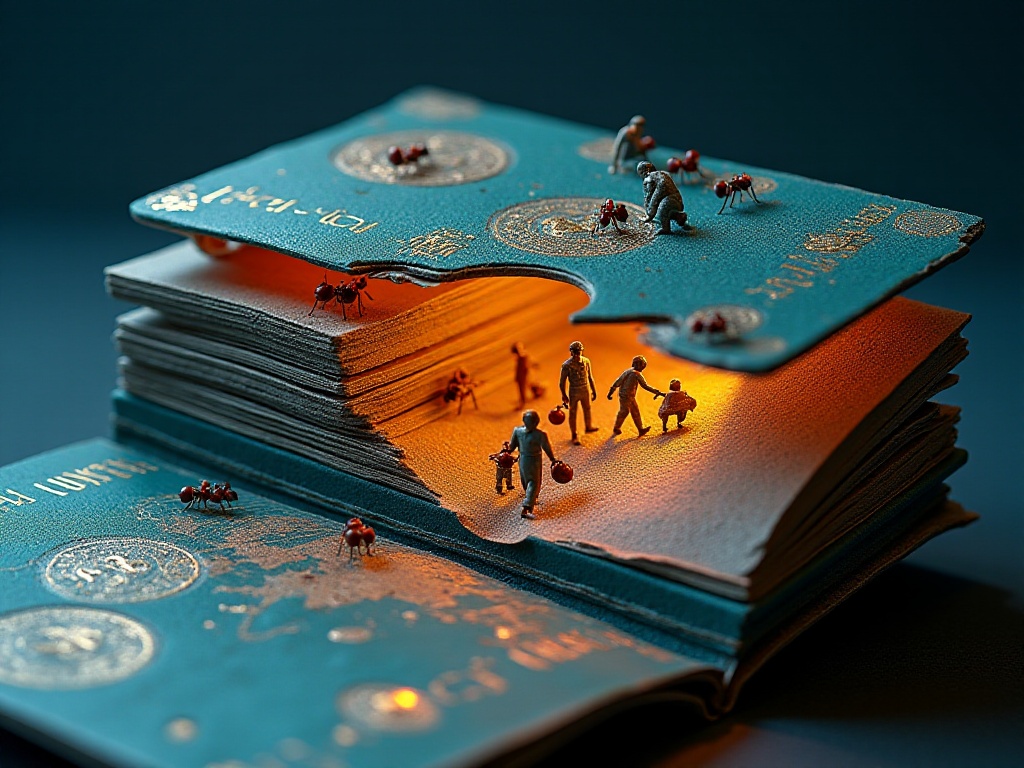Introduction
To be honest, I was super nervous when applying for my first visa! As a seasoned travel blogger who has visited over twenty countries, I completely understand the anxiety first-time applicants feel. I remember spending several days just researching online, overwhelmed by all the information. Looking back now, visas aren't really as scary as they seem - the key is knowing the right approach.
Visa Basics
Let's start with what a visa is. Think of it as an "invitation letter" from a foreign country. Just like you wouldn't climb over a fence to enter a friend's house - you need their permission. That's what a visa is - it represents a country's permission for you to enter.
Many countries are now simplifying entry procedures to boost tourism. For example, Japan's visa-free policy for Chinese tourists is a major development! But don't get too excited - visa-free doesn't mean you can just show up. You still need to prepare basic documents like round-trip tickets, hotel reservations, and itineraries. A friend of mine was questioned extensively at Japanese customs because they didn't have enough documentation.
Also, visa-free policies vary greatly between countries. Thailand, for instance, has visa-on-arrival, which you can only get at the airport and requires cash. During my first trip to Thailand, I didn't bring enough cash and had to borrow from fellow travelers - super embarrassing.

Types of Visas
There's quite a variety of visa types, let me break them down.
The most basic is the tourist visa, purely for travel purposes. The Schengen visa for Europe falls into this category. I remember applying for my first Schengen visa through France as my entry point. The preparation was intense - just ensuring sufficient bank balance for the past three to six months was quite a task.
Business visas are another major category, specifically for business trips and negotiations. The requirements are stricter than tourist visas since they involve commercial activities. A friend of mine in foreign trade frequently applies for business visas, and he says the invitation letter from foreign companies is crucial - you can't be careless with that.
Student visas are essential for studying abroad. These require the most complex documentation since you might be staying for an extended period. You need acceptance letters, proof of funds, study plans, and more. My cousin spent over a month preparing visa materials when applying to study in the UK.
Work visas are perhaps the most valuable type. They allow you to legally work and live in the destination country. However, they have the highest requirements, usually needing local company sponsorship and proof that your skills are in demand locally.

All About U.S. Visas
The U.S. visa is truly unique and deserves special attention.
First is scheduling the interview, which is quite interesting. Appointments are extremely limited, with many people trying to book slots at midnight. It took me several days of trying before securing an appointment - quite exhausting.
Filling out the DS-160 form is also quite technical. It has hundreds of questions covering everything from educational background to work experience, family situation, and travel plans. My first time filling it out, I spent an entire day just verifying information. The most frustrating part was when the webpage crashed halfway through, forcing me to start over - that was really annoying.
I still vividly remember the interview day. I woke up at 5 AM, worried about being late. There was a long queue at the embassy. Security was stricter than airports - they wouldn't even let you bring in phones. The visa officer was actually quite friendly, asking basic questions: Why are you going to the U.S.? How long will you stay? Where will you stay? What's your job?
There was a funny incident. The lady in front of me was asked why she was going to the U.S., and she said to visit her daughter. She got so nervous she forgot which school her daughter attended and started stamping her feet in frustration. Fortunately, she remembered eventually, making even the visa officer laugh.

Global Visa Guide
When it comes to global visas, there's such a variety, and I've seen so many interesting cases.
Take the Maldives - they give you a visa upon arrival, super convenient. When I went, I just needed my passport and return ticket. After filling out a form online and getting a stamp at the airport, it was all done.
But Russia is completely different. You need an invitation letter, specifically from an officially recognized travel agency. When I first applied for a Russian visa, I waited two weeks just for the invitation letter. The upside is that Russian visas can have long validity periods - I got a three-year multiple-entry visa that time.
African countries have their own unique visa policies. Kenya, for example, has an e-visa system - apply online and just bring the printout. But note that some African countries only accept cash for visa fees, and it must be in U.S. dollars - definitely prepare for that in advance.
Middle Eastern countries' visa policies have changed dramatically in recent years. Saudi Arabia, which barely allowed foreign tourists before, now offers e-visas. Dubai in the UAE even offers visa-free entry to many countries, no wonder it's become a global tourism hotspot.

Practical Tips
Since we're on the topic, let me share some practical experiences.
Start preparing visa materials early. I've seen too many people scrambling when they remember to apply for visas close to departure. For U.S. visas, just the interview appointment might take several months. During peak season, European Schengen visa processing also takes time. I recommend starting preparation at least three months in advance.
Proof of funds is crucial. Many think more money is better, but stability is key. I suggest maintaining good financial habits with stable income and expense records. I had a friend who suddenly transferred a large sum into their account before applying, making the embassy suspicious about the source of funds - their visa was rejected.
Make your itinerary realistic. I've seen people pack their schedules too full trying to look productive, but embassies can spot unrealistic plans. Like planning to cross three cities in one day - that's obviously impractical. Plan according to reality - better to list fewer places and keep it feasible.
Photo requirements are specific. Different countries have different requirements. U.S. visas require white backgrounds, while some countries want blue backgrounds. Sizes also vary. I recommend going to professional visa photo studios - they know different countries' requirements. My first photos from a regular studio were rejected, wasting a lot of time.
Visa interviews have techniques. First, dress appropriately - not too formal, but neat and proper. Answer questions concisely, avoid irrelevant details. I had a friend who was so nervous they rambled on, annoying the visa officer. Just stay natural and treat the visa officer like a regular person.

Final Thoughts
Through years of experience, I've realized that a visa is just a procedure. With thorough preparation and understanding of the process, there's nothing to fear.
Visa policies are changing rapidly now. With major policy changes like Japan's visa-free entry, it's important to check official announcements regularly. I've seen many people waste money following outdated guides online.
Finally, don't let visas discourage you from exploring the world. When I first started as a travel blogger, dealing with various visas seemed really troublesome. But looking back, those days queuing at embassies and preparing documents are also part of the travel story.
Looking forward to sharing more travel experiences with you all. If you have any interesting visa stories, please share them in the comments. Next time, I'll talk about planning the perfect international trip - don't forget to follow me!


